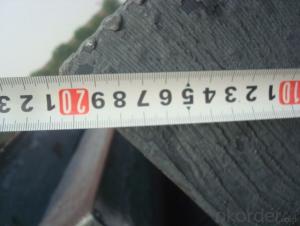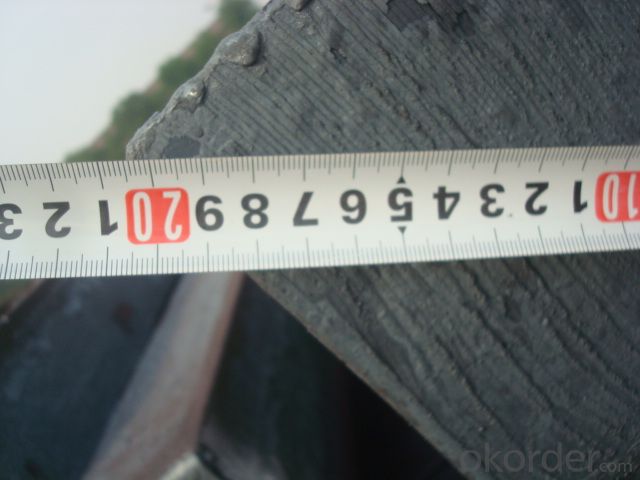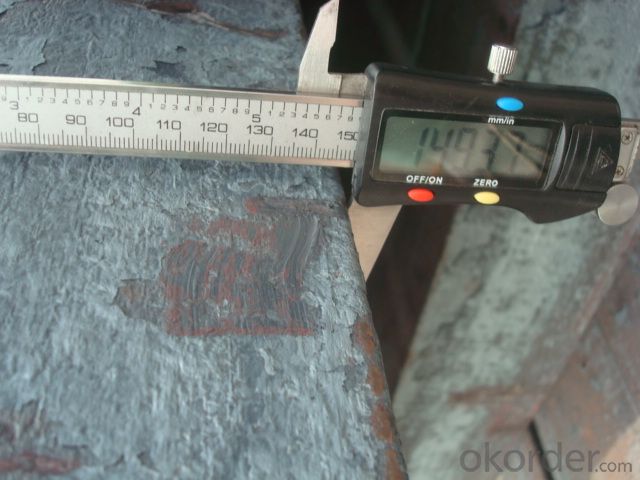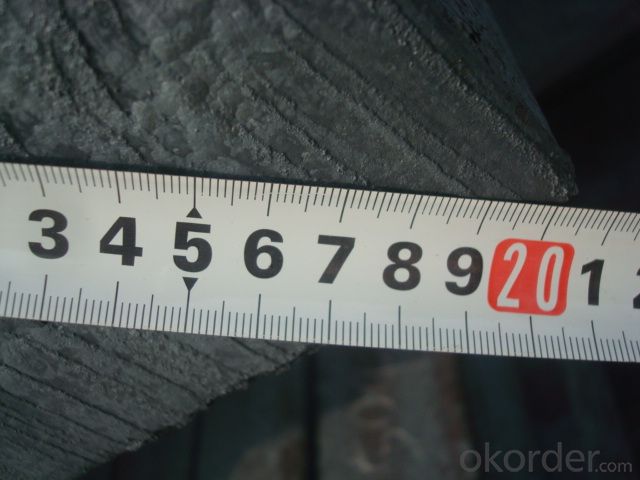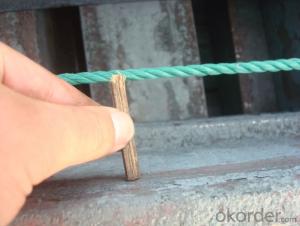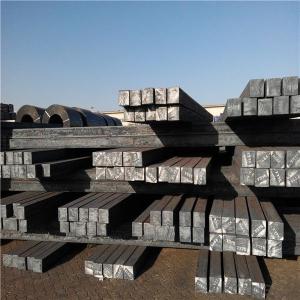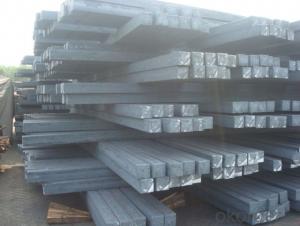Steel Billet Hot Rolled in Amazing Prices
- Loading Port:
- Tianjin
- Payment Terms:
- TT OR LC
- Min Order Qty:
- 1000 m.t.
- Supply Capability:
- 50000 m.t./month
OKorder Service Pledge
OKorder Financial Service
You Might Also Like
1.Structure of Steel Billet
Steel billet(ingot) by cogging or breakdown of semi-finished products, is the raw material of all kinds of steel mill. Billet section of square, round, flat, rectangular and abnormity of several kinds of, mainly related to the shape of rolled products.
2.Main Features of Steel Billet
Rectangular billet continuous casting billet and mainly general carbon steel, low carbon low silicon cold-rolled material, high quality carbon structural steel, high strength low alloy steel, special steel, etc.
The billet is mainly divided into two kinds from the shape:
Slab: cross section width and height of the ratio of the larger, mainly used for rolling plate.
Billet: equal cross section width and height, or a huge difference, mainly used for rolling steel, wire rod. ,
Steel billets have distinct characteristics as compared with already furnished steel bars and products. Billets have a specific grain structure, which enables the metal to be processed more intricately. Steel billets are also known for their malleability and ductility, especially when exposed to varying temperatures during shaping and molding.
3.Processing of Steel Billet
Steel billets are considered fresh and raw, and they must undergo a series of manufacturing processes before they can be used for various purposes. Billets are made by means of freezing molten liquid, and are later exposed to extremely low temperatures in order to allow the metal to take shape and solidify in chemical structure. The temperature manipulates the metal's physical properties, and tones its strength and durability. The subsequent processes provide the metal's curved mold design so that it can fit the allotted space provided by other machines, which complete the finishing procedures.
4.Steel Billet Images
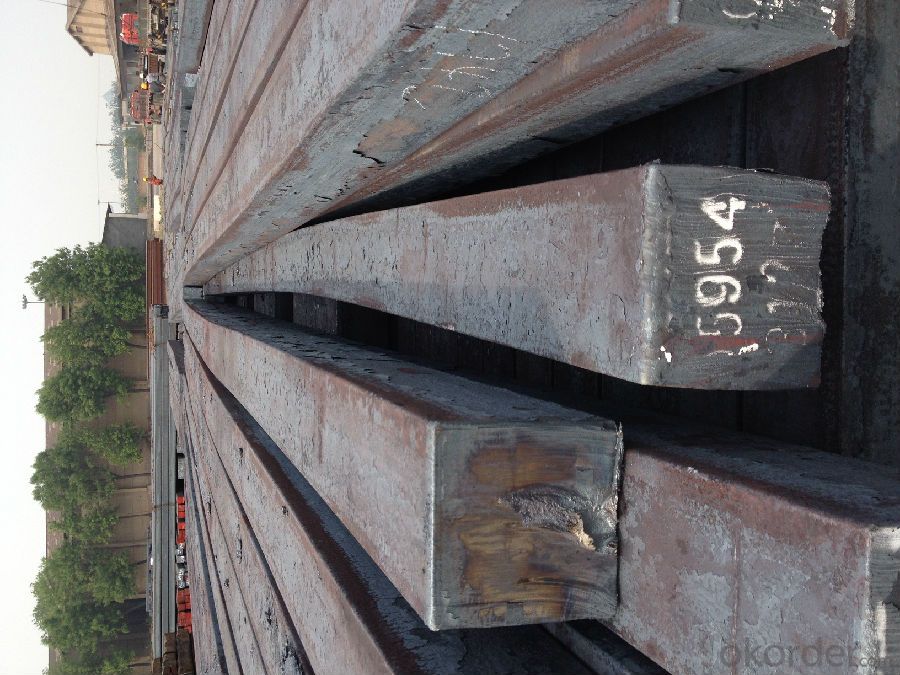
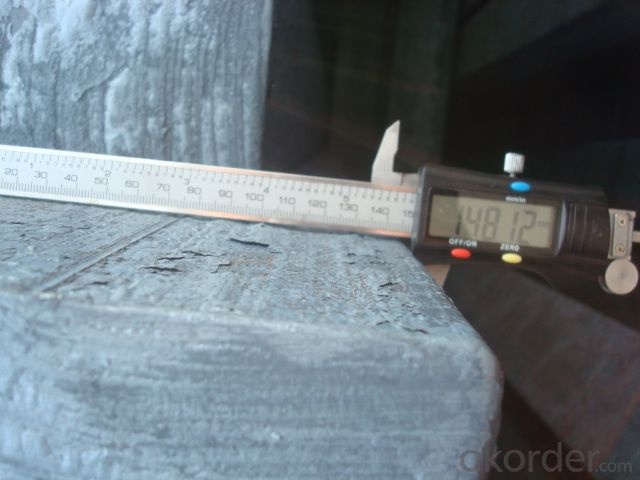
5. Steel Billet Specification
Hot rolled billet steel
Size: 50x50mm-180x180mm
Steel Grade: 3SP, 5SP,Q195,Q235,Q255,Q275 Length:3m-12m
MOQ: 1000MT/size
Payment term: TT or LC
Packing: in bulk , bundle
Shipment: by container , bulk vessel
Packaging Details: bundles with steel strips or as customers's requirements
Delivery time: 15-30 days after the deposit
Loading port:Tianjin, or other port China
Origin :China
Inspection:Third party inspection before loading.
6.FAQ
We have organized several common questions for our clients,may help you sincerely:
1) How to guarantee the quality of the products?
We have established the international advanced quality management system,every link from raw material to final product we have strict quality test;We resolutely put an end to unqualified products flowing into the market. At the same time, we will provide necessary follow-up service assurance.
2) How long can we receive the product after purchase?
In the purchase of product within three working days, We will arrange the factory delivery as soon as possible. The pecific time of receiving is related to the state and position of customers.Commonly 7 to 10 working days can be served.
I want to order some goods with small qty. but more varieties, can you accept the order?
A: Would you pls send the qty. of each model to us by email? We will check it and reply you soon.
- Q: How are steel billets used in the manufacturing of gears?
- Steel billets are a crucial component in the manufacturing of gears. Gears are mechanical devices that transmit power and motion by meshing with each other. To ensure the strength, durability, and precision of gears, steel billets are used as the raw material in their production. Steel billets are essentially semi-finished steel products that are obtained through a casting or rolling process. These billets serve as the starting point for the gears manufacturing process. The first step involves forging the steel billets into the desired shape and size. This is done by heating the billets to a specific temperature and then subjecting them to mechanical force, such as hammering or pressing, to shape them into the required gear form. Once the billets are forged into the initial gear shape, they undergo various machining operations to achieve the final product. This includes processes such as milling, drilling, and grinding to remove excess material and create the precise dimensions and features required for the gear. The use of steel billets ensures that the gears are strong enough to withstand the forces and stresses they will encounter during operation. Furthermore, steel billets offer several advantages in gear manufacturing. Steel is a highly durable and strong material, providing the necessary strength and resilience to handle heavy loads and high-speed rotations. It also exhibits excellent wear resistance, allowing gears to maintain their performance and longevity over time. Additionally, steel billets can be easily machined to achieve intricate gear designs, allowing for customization and optimization of gear performance. In summary, steel billets play a vital role in the manufacturing of gears. They serve as the starting material, providing the strength, durability, and precision required for the gears to function effectively. Through forging and machining processes, steel billets are transformed into gears with the necessary shape, dimensions, and features to transmit power and motion efficiently.
- Q: What are the potential applications of steel billets in the oil and gas industry?
- Steel billets have a wide range of potential applications in the oil and gas industry. These applications include but are not limited to: 1. Pipe manufacturing: Steel billets can be used to manufacture pipes that are essential for transporting oil and gas. The high strength and durability of steel make it an ideal material for constructing pipes that can withstand the harsh conditions of drilling, extraction, and transportation. 2. Drill collars: Steel billets can be machined into drill collars, which are heavy, thick-walled steel tubes used in drilling operations. Drill collars provide weight to the drill string, increasing the force applied to the drill bit. The strength and toughness of steel billets make them suitable for this application, as they can withstand the high torque and pressure exerted during drilling. 3. Downhole tools: Steel billets can also be used to manufacture various downhole tools used in oil and gas exploration, such as stabilizers, reamers, and subs. These tools are critical for maintaining wellbore stability, clearing obstructions, and enhancing drilling efficiency. The ability of steel billets to withstand high temperatures, pressures, and abrasive environments makes them suitable for these tools. 4. Offshore structures: Steel billets can be utilized in the construction of offshore platforms, jackets, and other structural components. These structures must withstand extreme weather conditions, corrosive environments, and heavy loads. Steel billets, with their high strength, corrosion resistance, and weldability, are an ideal choice for such applications. 5. Equipment and machinery: Steel billets can be machined into various components and parts for oil and gas equipment and machinery. These include valves, fittings, flanges, connectors, and other critical components used in drilling rigs, pipelines, refineries, and processing facilities. The versatility and reliability of steel make it a preferred material for such applications. In summary, steel billets have numerous potential applications in the oil and gas industry due to their high strength, durability, corrosion resistance, and versatility. From pipe manufacturing to the production of downhole tools, offshore structures, and equipment components, steel billets play a vital role in ensuring the efficiency, safety, and reliability of oil and gas operations.
- Q: What are the different steelmaking processes used for producing steel billets?
- There are several different steelmaking processes used for producing steel billets. Some of the common ones include the electric arc furnace (EAF) process, the basic oxygen furnace (BOF) process, and the continuous casting process. The EAF process involves melting scrap steel using an electric arc, while the BOF process involves blowing oxygen through molten iron to remove impurities. The continuous casting process involves continuously pouring molten steel into a water-cooled mold to form solid billets. Each process has its advantages and is used depending on factors such as cost, quality requirements, and availability of raw materials.
- Q: Can steel billets be used for making architectural components?
- Architectural components can indeed be made using steel billets. Steel billets are semi-finished products commonly utilized in the production of various steel items, including architectural components. These billets undergo heating and are subsequently transformed into the desired shape through processes such as forging, extrusion, or rolling. Among the architectural components that can be created are structural elements like beams, columns, and trusses, as well as decorative elements like handrails, facades, and ornamental fixtures. Steel is a highly preferred material for architectural components due to its exceptional strength, durability, and versatility. It can be easily shaped into intricate forms, enabling architects and designers to construct distinctive and visually appealing structures. Moreover, steel exhibits remarkable resistance to weathering, corrosion, and fire, further enhancing its suitability for architectural purposes.
- Q: Can steel billets be used in the aerospace industry?
- Yes, steel billets can be used in the aerospace industry. Steel billets are a semi-finished product that can be further processed into various components and structures required for aerospace applications. Steel is known for its high strength, durability, and heat resistance, which are crucial properties for aerospace materials. Steel billets can be used to manufacture various aerospace components such as engine parts, landing gear, structural frames, and fasteners. Additionally, steel's availability and cost-effectiveness make it an attractive choice for certain aerospace applications. However, it is important to note that the specific requirements and standards of the aerospace industry must be met when using steel billets to ensure the highest level of safety and reliability.
- Q: How do steel billets contribute to sustainable construction?
- Steel billets play a crucial role in sustainable construction through various means: 1. Energy efficiency: By utilizing electric arc furnaces, steel billets require less energy than traditional manufacturing methods. This leads to decreased greenhouse gas emissions and a reduced carbon footprint. 2. Recyclability: Steel billets can be recycled multiple times without losing their mechanical properties, making steel one of the most recycled materials worldwide. This conserves natural resources, reduces waste disposal, and lessens the need for new steel production. 3. Strength and durability: With their exceptional strength and durability, steel billets are an excellent choice for sustainable construction. Their structural integrity ensures long-lasting buildings, minimizing the need for frequent repairs or replacements and extending the lifespan of structures. 4. Versatility: Steel billets can be shaped and formed into various structural components, allowing for flexible design and construction. This adaptability enables the construction of sustainable buildings that can easily accommodate changing requirements, reducing the necessity for new construction. 5. Resilience to natural disasters: Steel billets exhibit outstanding resistance to seismic forces, hurricanes, and other natural disasters. This makes them ideal for constructing buildings in disaster-prone regions, thereby enhancing the safety and resilience of the built environment. 6. Reduced construction time: The prefabricated nature of steel billets enables faster construction, minimizing disruption to the environment and local communities. Additionally, prefabricated steel components can be easily dismantled and reused, further enhancing sustainability. In conclusion, steel billets contribute significantly to sustainable construction by reducing energy consumption, offering recyclability, providing strength and durability, allowing for design versatility, resisting natural disasters, and reducing construction time. By incorporating steel billets into construction projects, we can create environmentally-friendly and long-lasting structures that promote sustainability in the built environment.
- Q: What is the role of steel billets in the production of steel bars?
- Steel billets have a crucial role in the production of steel bars, as they serve as semi-finished forms of steel typically cast in square or rectangular shapes. These billets are essential for creating various steel products, including steel bars. The main purpose of steel billets is to undergo further processing and transformation into steel bars through a series of manufacturing steps. After obtaining the steel billets, they undergo a process called hot rolling. This process involves subjecting the billets to high temperatures and passing them through rolling mills, which shape and elongate them into desired forms like round bars, square bars, or hexagonal bars. During the hot rolling process, the steel billets experience extreme heat and pressure, causing them to deform and elongate. This process improves the mechanical properties of the steel, such as strength, toughness, and ductility. Additionally, it refines the grain structure of the steel, enhancing its overall quality and performance. Steel bars produced from steel billets have wide applications in industries like construction, manufacturing, infrastructure, and automotive. They serve as structural components in buildings, bridges, and other infrastructure projects, as well as in the production of machinery, tools, and equipment. In summary, steel billets play a critical role in the production of steel bars. They act as the starting material for the manufacturing process and go through hot rolling to transform into desired shapes and sizes. The resulting steel bars find extensive use in various applications due to their improved mechanical properties and enhanced quality.
- Q: What are the specifications for steel billets used in the aerospace industry?
- The aerospace industry demands highly precise and stringent specifications for steel billets. These billets must adhere to specific standards to guarantee the safety and durability of aircraft components. Firstly, the steel utilized for aerospace billets must possess outstanding strength and toughness. It must exhibit a high tensile strength and the ability to withstand extreme forces and stresses encountered during flight. Additionally, the steel must demonstrate excellent fracture resistance to minimize the risk of catastrophic failure. Moreover, the steel billets must possess exceptional resistance to corrosion and oxidation. This is crucial as aircraft frequently operate in harsh environments, such as high altitudes and exposure to various chemicals. The steel should resist rust, pitting, and other forms of degradation that can compromise its structural integrity over time. Furthermore, the steel billets employed in aerospace applications must exhibit precise dimensional tolerances and uniformity. They should be manufactured according to exact specifications to ensure consistency in the production of aircraft components. This entails precise size, shape, and surface finish, which are vital for proper fitting and assembly. Regarding chemical composition, the steel used for aerospace billets may vary depending on the specific application and component being manufactured. However, it typically includes elements like carbon, manganese, chromium, nickel, and molybdenum. These alloying elements enhance the mechanical properties of the steel, such as hardness, toughness, and heat resistance. Additionally, the steel billets utilized in the aerospace industry undergo rigorous testing and quality control procedures. This includes non-destructive testing methods such as ultrasonic inspection, magnetic particle inspection, and dye penetrant inspection to identify any internal defects or discontinuities. In summary, the specifications for steel billets used in the aerospace industry encompass exceptional strength, toughness, corrosion resistance, dimensional accuracy, and precise chemical composition. These stringent requirements ensure the reliability and safety of aircraft components, enabling them to withstand the demanding conditions experienced during flight.
- Q: What are the different types of mechanical property testing methods for steel billets?
- There are several different types of mechanical property testing methods used to evaluate the quality and strength of steel billets. These methods include: 1. Tensile Testing: Tensile testing is one of the most commonly used methods to determine the mechanical properties of steel billets. It involves applying a tensile force to a small sample of the billet until it fractures. This test measures the strength, yield strength, elongation, and reduction in area of the material. 2. Impact Testing: Impact testing is used to assess the toughness and resistance to fracture of steel billets. It involves striking a notched specimen with a pendulum or hammer and measuring the energy absorbed during fracture. The results provide information about the material's ability to withstand sudden shocks or dynamic loads. 3. Hardness Testing: Hardness testing determines the resistance of the steel billet to indentation or scratching. Various methods can be employed, such as Rockwell, Brinell, or Vickers hardness testing. The results are often correlated with other mechanical properties, such as strength and ductility. 4. Charpy Testing: Charpy testing is a type of impact test specifically designed to evaluate the notch toughness of steel billets. It involves striking a notched specimen with a pendulum, and the energy absorbed during fracture is measured. This test is particularly useful in assessing the material's behavior under low-temperature conditions. 5. Bend Testing: Bend testing is performed to assess the ductility and flexibility of steel billets. It involves bending a sample around a specified radius until it fractures or shows signs of cracking. This test provides information about the material's ability to withstand deformation without breaking. 6. Fatigue Testing: Fatigue testing is used to evaluate the steel billet's resistance to cyclic loading or repeated stress. It involves subjecting a sample to a varying load, and the number of cycles required for failure is recorded. This test helps determine the material's durability and its ability to withstand long-term stress. These mechanical property testing methods play a crucial role in ensuring the quality and reliability of steel billets for various applications. By evaluating the strength, toughness, hardness, and other mechanical properties, manufacturers and engineers can make informed decisions about the suitability of the material for specific uses.
- Q: What are the main factors affecting the impact toughness of steel billets?
- The impact toughness of steel billets can be affected by several main factors. Firstly, the toughness of the steel is significantly influenced by its chemical composition. Alloying elements like carbon, manganese, and nickel can enhance toughness. Higher carbon content increases hardness but decreases impact toughness. On the other hand, the addition of manganese and nickel promotes the formation of fine-grained structures, improving toughness. Secondly, the heat treatment process used during steel billet production plays a crucial role in their toughness. Annealing and quenching processes refine the microstructure of the steel, making it more resistant to cracking and brittle fracture. However, improper heat treatment or rapid cooling rates can lead to the formation of undesirable phases or microstructural defects, reducing impact toughness. Thirdly, the presence of impurities and inclusions in the steel also affects its toughness. Non-metallic inclusions, such as sulfides and oxides, act as stress concentrators and initiate crack propagation during impact loading. Therefore, steel with lower impurity levels and cleaner inclusion content exhibits higher toughness. Moreover, the grain size of the steel significantly influences its toughness. Finer grain sizes improve toughness due to the increased number of grain boundaries that act as barriers to crack propagation. Thus, steel billets with smaller grain sizes are more resistant to brittle fracture. Lastly, the mechanical working processes like hot rolling or forging can affect the toughness of steel billets. These processes induce deformation and strain hardening, increasing strength but potentially decreasing toughness. Careful control of deformation parameters is necessary to balance strength and toughness in steel billets. To summarize, the impact toughness of steel billets is influenced by various factors, including chemical composition, heat treatment, impurities and inclusions, grain size, and mechanical working processes. Understanding and optimizing these factors are crucial in producing steel billets with the desired toughness for specific applications.
Send your message to us
Steel Billet Hot Rolled in Amazing Prices
- Loading Port:
- Tianjin
- Payment Terms:
- TT OR LC
- Min Order Qty:
- 1000 m.t.
- Supply Capability:
- 50000 m.t./month
OKorder Service Pledge
OKorder Financial Service
Similar products
Hot products
Hot Searches
Related keywords
